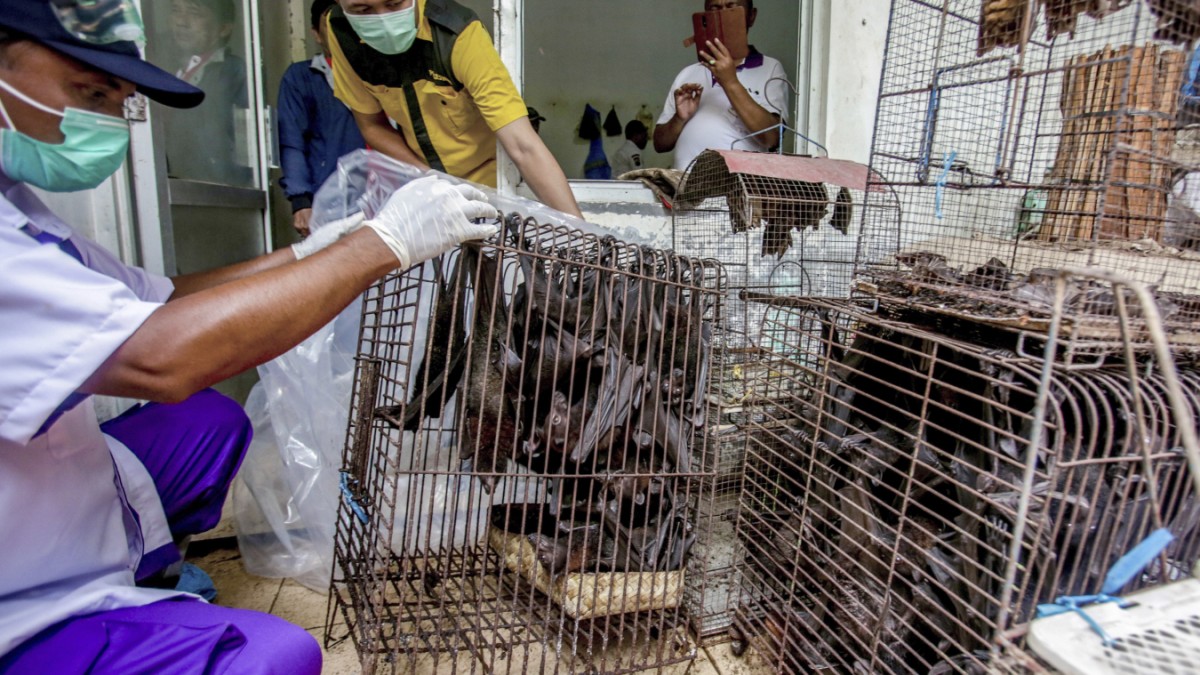Could the virus come from a laboratory? Nonsense, say many researchers. But it is obviously not impossible. This is shown by controversial experiments in recent years.
–
If a virus appears to appear out of nowhere, you can almost certainly count on speculation about an origin from the laboratory. This has been the case with Sars-CoV-2 for months. First of all, because there is a high-security laboratory in the Chinese city of Wuhan, where the virus first infected many people. Later, because the US government under President Donald Trump allegedly wanted evidence that the virus had escaped from this laboratory. Neither are good reasons to believe the theory.
But even though many scientists shake their heads when it comes to the laboratory hypothesis: Strictly speaking, there is probably a way to give the virus the properties that make it so dangerous for humans. It’s about gain-of-function experiments, called GoF for short. This type of pathogen manipulation has already led to debates about biosecurity in the past, because the core issue is to create new pathogens in order to prepare for future attacks from nature. This was rigorously tried with flu pathogens, in the Netherlands around 2011 in Ron Fouchier’s laboratory at the Erasmus Medical Center in Rotterdam. The bird flu virus H5N1 developed such aggressive properties in the experiments that a moratorium on this type of research was imposed shortly afterwards – at least for some time – to become clear about the relationship between benefit and risk. The debate has not yet ended and could now be given new impetus, since GoF experiments have been used for a long time. And actually also on pathogens like Sars-CoV.
Rigorous experiments on flu viruses led to extremely aggressive pathogens
So a work appeared in five years ago Nature Medicine, which, under the direction of American researchers, describes the production of a chimeric Sars virus from a bat virus and a gene artificially inserted into the genetic material of the pathogen. According to the report, the new pathogen caused severe diseases in experimental animals and also affected human lung cells. At the time, the authors also included researchers from the Wuhan Institute of Virology. According to the paper, trials showed that another Sars pandemic from bat corona viruses was at hand. And so it should come a few years later – albeit with a virus that was built somewhat differently from the virus that was artificially produced at the time.
Could the current corona virus be produced in the same way? After all, researchers and secret services agree: The current virus is not a construction, it is not a human-made pathogen, neither in whole nor in part. However, gaining new viral properties does not only work with the help of the genetic tool kit. It is also possible to offer the virus ideal opportunities for reproduction and thus promote natural mutations. Ron Fouchier’s experiments with bird flu had already shown that. Fouchier repeatedly targeted raccoon animals with large amounts of H5N1 in order to create a multiply mutated ferret killer from a reasonably dangerous pathogen over a few direct infections. And like Chinese scientists only three weeks ago in a preprint bio R xiv reported, comparable works also with Sars-CoV-2.
The team led by Yusen Zhou from the biosafety laboratory at the Beijing Institute for Microbiology and Epidemiology was able to adapt the new coronavirus, which is dangerous for humans, to laboratory mice within six passages so that the animals became reliably infected and sick. The researchers report a crucial mutation that occurred and now want to use their animal model to search for a vaccine. However, the experiment also shows how much the evolution of viruses can be accelerated in the laboratory. Therefore, there are probably ways to obtain a pathogen from another, naturally occurring bat virus by sufficient reproduction in the laboratory, which in the end looks like the one the world is now dealing with. A report from Newsweek According to Wuhan, gain-of-function tests on bat corona viruses should also take place in Wuhan last year, piquantly funded by the US National Health Institutes. The project has now been canceled without further ado.
All reports on the current situation in Germany and worldwide as well as the most important news of the day – twice a day with SZ Espresso. Our Newsletter brings you up to date in the mornings and evenings. Free registration: sz.de/espresso. In our News app (download here) you can also subscribe to the espresso or breaking news as a push message.
—
But what does that mean? First of all, nothing. Not everything that is conceivable happens. It is still more plausible and likely that the virus has slowly made its way to humans on its own, in ways that are difficult to simulate in the laboratory. The studies that could contribute to this knowledge must take place in China’s wildlife farms, because there is contact between animals and bats on the one hand and animals and humans on the other. In addition, a virus can reproduce there almost unhindered once it has started. In May, a panel of experts from the World Health Organization also recommended doing “in the field” research, like the science magazine Science reported. So far, however, it is still unclear whether Beijing will grant independent researchers this option. And until then there remains: a rest of doubts.
–
Coronavirus: How do you deal with uncertainty?:Readers’ discussion
– .


